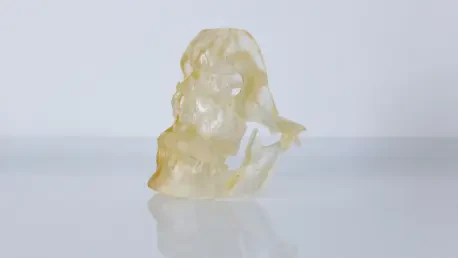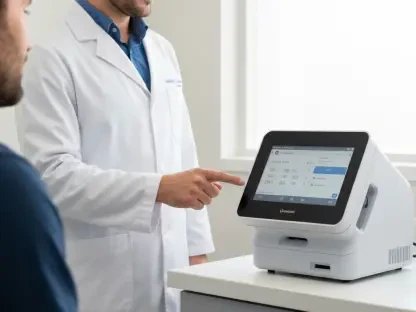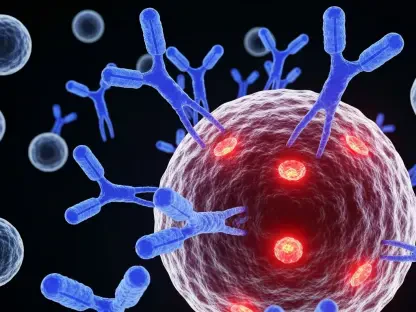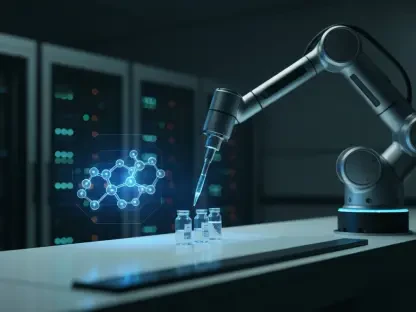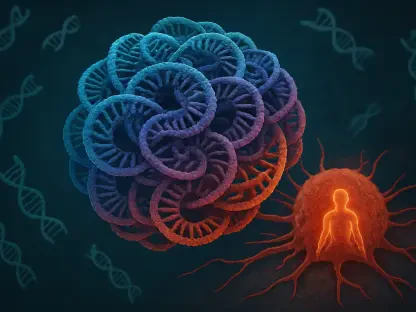In the dynamic field of regenerative medicine, the promise of 3D bioprinting technology is reshaping the approach toward bone repair and restoration. Bone regeneration presents a significant challenge in medical science due to the complex structure and vital function of bones. Each year, millions face complications like delayed or non-union fractures, highlighting an urgent need for innovative solutions. 3D bioprinting emerges as a potential game-changer, aiming to precisely mimic bone’s extracellular matrix (ECM). Leveraging diverse crosslinking chemistries and natural polymers, this technology focuses on crafting biocompatible, durable constructs. The exploration of methods to effectively reproduce the ECM’s intricate architecture and functionality paves the way for advanced treatment options, promising to revolutionize bone regeneration techniques.
The Complexities of Bone Regeneration
The Urgent Need for Advanced Bone Regeneration Approaches
Bone is the second most transplanted tissue worldwide, underscoring its vital role in human physiology. Complications with fractures, often resulting in delayed healing or non-union, highlight the limitations of current treatment options. Traditional methods, such as bone grafting, pose significant challenges, including donor site morbidity and limited availability of suitable grafts. Therefore, the medical community is in continuous pursuit of alternative approaches that can enhance the efficiency and success rate of bone healing while minimizing risks.
Advancements in bioengineering and material sciences have positioned 3D bioprinting as a leading contender in this quest for better bone regeneration strategies. By leveraging precise architectural designs and a controlled microenvironment, this technique offers unprecedented opportunities to tailor treatments specific to individual needs. The ability to customize the physical and biological characteristics of constructs represents a remarkable advantage over conventional techniques. Nevertheless, the complexity of bone tissue, characterized by its mineralized ECM and unique cellular composition, poses significant challenges that must be overcome to achieve functional tissue regeneration.
Mechanobiology and Its Role in Mimicking Bone ECM
Mechanobiology, the study of the mechanical environment’s influence on cellular processes, plays a crucial role in understanding bone ECM imitation. The bone ECM is rich with biochemical and biophysical cues essential for osteogenesis, guiding the differentiation and function of cells that contribute to bone regeneration. The dynamic nature of the ECM, including its stiffness, porosity, and biochemical composition, regulates cellular behavior and tissue architecture, signifying a complex interplay crucial for successful tissue engineering.
In the realm of 3D bioprinting, replicating these mechanobiological cues involves utilizing advanced materials and design techniques to build scaffolds that can emulate the native bone ECM. Critical components include bioactive sites for cell attachment and differentiation and suitable mechanical properties to support the bone-like matrix’s robustness and flexibility. The challenge lies not only in selecting the appropriate materials but also in optimizing their integration through sophisticated crosslinking chemistries that ensure stability and biocompatibility, essential for long-term regenerative success.
Bioprinting Techniques and Material Innovations
The Role of Crosslinking Chemistries
The magic of 3D bioprinting lies in developing intricate structures that can faithfully replicate the natural bone ECM. One of the critical aspects of successful 3D bioprinting for bone regeneration is employing crosslinking chemistries that can create stable yet biocompatible networks. These crosslinking mechanisms, including chain-growth and step-growth processes, have distinctive properties that influence the mechanical integrity and biological functionality of the printed constructs.
Chain-growth and step-growth crosslinking represent two core mechanisms with distinct pathways and results. Chain-growth typically involves radical polymerization, allowing rapid network formation but often leading to heterogeneous structures. In contrast, step-growth systems facilitate more controlled reactions, resulting in homogenous and less cytotoxic networks. The choice of chemistry directly impacts the scaffold’s degradation profile and its ability to support healthy cell proliferation. Emerging bioprinting research indicates a shift towards step-growth crosslinking due to its superior network uniformity and reduced cytotoxicity, driving new developments in creating resilient bone-like frameworks.
Natural Polymers and Their Bioactive Potential
Natural polymers, such as gelatin methacryloyl (GelMA), hyaluronic acid, and silk fibroin, have garnered significant attention in bone bioprinting due to their inherent biocompatibility and bioactivity. These materials offer an exceptional platform for creating ECM mimicry capable of enhancing bone regeneration. GelMA, known for its excellent cell adhesion properties, supports osteogenic differentiation, providing an ideal scaffold for bone tissue engineering. Hyaluronic acid’s role in promoting cell proliferation and differentiation further enhances its appeal, while silk fibroin’s mechanical strength complements the composite’s structural needs.
The synergy formed between these natural polymers and crosslinking chemistries provides a foundation for developing sophisticated bioinks. These bioinks, used in extrusion-based and inkjet printing modalities, help construct three-dimensional scaffolds that mimic the precise architecture and biomechanical attributes of bone tissue. The integration of these polymers into printing techniques allows for the adjustment of mechanical properties, degradation rates, and biological interactions, forming a balanced environment conducive to cellular growth and tissue formation.
Cutting-Edge Printing Techniques and Challenges
Deposition-Based Bioprinting for Osteogenesis
The application of deposition-based bioprinting, encompassing extrusion and drop-on-demand inkjet printing, is crucial in the pursuit of effective bone regeneration solutions. These methods offer flexibility in fabricating complex structures with high precision, maintaining cell viability and functionality within printed constructs. Extrusion-based bioprinting is notably valued for its ability to handle high-viscosity materials, allowing multi-layered structures to be built with the requisite mechanical stability necessary for withstanding physical forces.
However, mastering this technique demands meticulous attention to printing parameters, such as nozzle diameter, extrusion speed, and pressure. These factors significantly impact the survival rate of encapsulated cells and the overall integrity of the printed scaffold. Meanwhile, drop-on-demand inkjet printing facilitates high-resolution constructs with tunable material compositions, albeit with challenges related to biocompatibility and limited material selection. Balancing these intricacies is key to optimizing bone tissue functionalities within the bioprinted ECM, ensuring successful integration with the host tissues.
The Potential of Light-Based Bioprinting Techniques
Light-based bioprinting, including stereolithography (SLA) and digital light processing (DLP), represents another frontier in fabricating bone-like tissues. These methods excel in constructing highly defined cellular networks by employing photopolymerization processes that solidify bioinks under controlled light exposure. SLA enables the creation of complex shapes with precision, crucial for mimicking an ECM that accurately replicates native bone architectures. Similarly, DLP leverages digital light projection to swiftly and effectively polymerize entire layers, increasing fabrication speed.
Despite their advantages, light-based techniques come with inherent limitations regarding the selection of viable materials and potential photoinitiator toxicity. Continuous research efforts focus on enhancing these techniques’ scalability and refining bioinks for osteogenic outcomes. Volumetric bioprinting (VAM), a relatively new approach, utilizes a volumetric model to penetrate deep layers with light, offering the potential to overcome barriers related to print depth and speed. Evaluating material properties and optimizing printing parameters remain crucial for facilitating the desired cell responses and advancing bone tissue engineering technologies.
Bridging Technological Gaps and Future Directions
Overcoming Limitations in Bioprinting
The successful application of 3D bioprinting in bone regeneration requires addressing several technological and biological challenges. Mechanical stability, essential for mimicking the complexity of native bone tissue, often poses significant hurdles. Achieving the necessary mechanical properties without compromising biocompatibility demands a continuous balance in bioink composition and scaffold design. Moreover, understanding the immunological response to scaffolds remains crucial, as foreign materials can provoke adverse reactions, hindering integration and healing processes.
These challenges necessitate innovative solutions that combine engineering and biology. Recent research efforts focus on fine-tuning bioinks through advanced formulations that offer better mimicry of native tissue properties. Exploration into hybrid materials and composite systems combines the advantages of various constituents, enhancing scaffold performance and functionality. Addressing these limitations effectively is pivotal to unlocking the transformative potential of 3D bioprinting, paving the way for viable clinical applications in bone tissue regeneration.
The Path Forward in Bone Tissue Engineering
The future of bone tissue engineering through 3D bioprinting lies in harnessing the synergy between material science, engineering, and biology. Ongoing advancements in crosslinking chemistries and biofunctional polymers mark promising strides in developing refined bioinks that closely resemble natural ECM environments. The development of these advanced matrices is expected to facilitate cellular attachment, proliferation, and differentiation, thereby promoting effective bone regeneration. Furthermore, customizing biomaterial properties to align with patient-specific needs remains a priority, enhancing the efficacy and applicability of bioprinted constructs.
Integrating cutting-edge bioprinting techniques with sophisticated material research holds considerable promise for advancing regenerative medicine. Collaborative efforts engaging biomedical engineers, material scientists, and clinicians are essential to bridge ongoing challenges and achieve sustained advances. As these technologies progress, their potential to revolutionize bone tissue engineering becomes increasingly tangible, offering hope for innovative solutions that meet diverse patient needs and improve quality of life.
Future Considerations and Action Steps
The exploration of 3D bioprinting in bone regeneration showcases remarkable advancements, yet the journey toward clinical translation is complex and filled with challenges. While significant strides have been made in understanding crosslinking chemistries and leveraging natural polymers, future research must expand upon these foundations to address scalability and manufacturability. A multidisciplinary approach is crucial, combining expertise from various fields to optimize bioprinting methodologies and material properties for broad clinical application.
Future considerations also stress the importance of regulatory frameworks and ethical considerations in advancing these technologies safely and effectively. Standardizing protocols and gaining regulatory approvals will play a vital role in transitioning laboratory innovations into clinical settings. Additionally, continuous evaluation of patient-specific needs, potential risks, and long-term outcomes will guide the integration of bioprinted constructs into mainstream healthcare approaches. Ultimately, sustained research and collaboration will drive the progression of 3D bioprinting from an experimental technology to a transformative tool in medical science.
